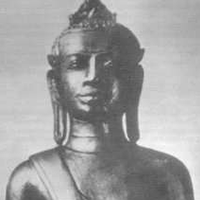Thought-forms: Seeding a New Reality
‘— by Bez
Anyone who’s ever done a Zen ‘practice period’, an occasion to intensify engagement with Buddhist principles, knows how tumultuously transformative one can be. At some point during a relatively warm, extremely dry 2015 Northern California winter practice period I awakened from a rare respite of dreaming sleep to a chorus of howling coyotes. As heartening as nature’s calls tend to be for me these days there was something eerie, something urgent in this refrain. Either as their conscious intention or projection of my own internal reality, their high-pitched yelps resonated the morning air
WAKE UP, HUMANS
WAKE UP!!!
A few hours later, shortly after the wake-up bell while I was walking to the dining room for coffee, they started in again, this time much closer. Half desiring, half fearing a face-to-face engagement with them I stopped, bowed solemnly in their direction and uttered: I hear you. I thank you. I’m awake.
The valley’s splendor makes it easy to tune-out events taking place “over the hill”, opting instead to float around in a bliss bubble. Keeping with my promise of alertness to them I went to a student computer (though we’re advised against it), took a deep breath and scanned the day’s headlines. Sure enough, there was an article concerning the accelerating shrinking of Greenland’s ice mass. I’ll spare you the details, except to say that some scientists insist that we are now well into a cycle of “climate feedbacks” – both positive (increasing global warming) and negative (mitigating warming) which will likely cause unstoppable global climactic meltdown.
Sickened by despair I stepped outside and discovered to my surprise that, after several exceedingly dry, clear mornings, there was at last fog in the air again. Inhaling the exquisite ambient moisture, I was thunderstruck by a novel idea.
The word “feedback” indicates partial return of an output signal to the input of a machine, device or system, modification or control of a process or system by its results or effects. Zen Center has a daily chant which goes:
“May this land be peaceful and harmonious / Stable and free from calamity…”
This chant, intoned for the sake of all beings, is basically a thought-form which is also, at an energetic level, an instrument of feedback. It signals an intention to safeguard a very precious system, Green Dragon Valley, from disruption and misfortune, such as might occur for want of rain. I may not be a field ecologist but I know desiccated trees and plants when I see them; it concerns me and I imagine I’m not alone.
The novel idea emerged out of what seemed to be a defiance of climactic conditions caused by the now-notorious “ridiculously resilient ridge”, essentially a massive dome of high pressure blocking the entire Western half of the US from receiving much needed precipitation from the Pacific Ocean.
Recalling James Lovelock and Lynn Margulis’s Gaia Hypothesis, which envisions the Earth as an innately intelligent, vastly complex self-regulating system, the logic went like this.
The coyotes, conscious actors in the planet’s self-regulation, summoned the humans, primary agents of ecological calamity, to wakefulness. Acknowledgment of them and inquiry into the state of planetary affairs was my feedback response. Sensing a warming temperature connection between news of ice melt in distant Greenland and drought in California, I was overcome by longing for relief from dryness. Stepping outside, I discovered that the overcast weather conditions typical to this region had returned. Since the ridiculously resilient ridge has been deflecting moisture from the coast, it occurred to me that perhaps global climactic conditions are to some extent conditioned by non-terrestrial, non-atmospheric feedback signals such as human intention – our daily chant for harmony and stability being an example.
What I’m proposing is that there’s a synchronistic unfolding of cause and effect, an underlying purpose, a telos, to this series of events. Moreover, thoughts are indeed things and taking them seriously – harmonizing and harnessing thought-forms of ecological atonement and restoration in an ongoing, systematized way – will be essential in rescuing the planet from human-caused ruin. Pushing this line of thinking to its outermost reaches, it could be that Gaia, the matrix out of which all human endeavor germinates, is really screaming at the top of her lungs through ecological upset: “drastically modify your ways… or suffer the direst consequences” at her most unmanageable children, just like any distressed mother would. In an admirable feat of intellectual creativity mathematician, ethnobotanist, philosopher and self-professed psychonaut Terence McKenna even mused that an unambiguously self-aware Earth willfully sacrificed her resources and Web of Life to human beings for the 50.000 or so years it took for us to reach the threshold of a world-system transforming evolutionary leap in consciousness.
Signs and portents abound that we are rapidly drawing close to that moment.
I realize this kind of talk is off-putting to those who favor the rational-materialist method of decoding reality through objective measurement of reduced quantities. Others, like some of my fellow Buddhists, maintain a dispassionate attitude which makes them regard sentiments like these with a kind of serene bemusement. A decidedly detached cool does indeed run through some of the World Honored One’s most profound pronouncements. However, Vietnamese Zen monk and activist Thich Nhat Hanh apparently produced enough scriptural support to define bodhisattva-hood in terms of active solidarity with suffering beings, and his model of engaged Buddhism has been adopted and adapted to fit our rapidly changing times. Implicit here is an understanding that not all thought-forms of the ancient East are applicable in this moment. Siddhartha himself, in the Kalama Sutra, Angutarra Nikaya 3.65, admonished his students to believe and live up to something not because it’s been handed down by tradition but because direct experience demonstrates that it’s blameless and for the benefit of all beings.
In a similar vein, Herr Albert Einstein remarked: “we cannot solve our problems with the same thinking we used when we created them.” Ironically he also expressed disdain of a phenomenon he dubbed “spooky action from a distance” – which has actually been turning up over and over again in quantum experiments demonstrating ‘wave function collapse’: a single subatomic particle for all intent and purpose “everywhere” (in superposition) until detected, whereupon it instantly assumes a discrete local point. In fact, the theories that electrons, photons, etc. can be known by either position or momentum but not both (Heisenberg uncertainty principle), and that the very act of looking at quantum phenomena changes their behavior (observer effect), have been around since the late 1920s – when Einstein first dissed spooky distant action!
These assertions, as tepid as they may appear on paper, make many people very uneasy. If it’s true that observation in some way influences outcomes, even if only at the minutest levels, then we appear to have at least partial confirmation of a quote attributed to a mysterious ancient personage whose teachings are definitely in line with those of Siddhartha Gautama, Lao-Tzu:
Watch your thoughts, for they become Words
Watch your words, for they become Actions
Watch your actions, for they become Habits
Watch your habits, for they become Character
Watch your Character, for it becomes Destiny.
“Wait a minute”, a typical objection will go; “all these theoretical propositions about the observer-matter relationship: Planck scales, time reversal symmetry, Bose-Einstein condensates, entanglement, superposition, etc., are fine and good at the subatomic level, but how do they relate to physical reality?
A growing body of empirical data is revealing in some truly astonishing ways how these propositions show up in the real world. This data has come from academics working in a powerful cross-section of disciplines: Dr. Candace Pert in neuroscience, Dr. Bruce Lipton in developmental biology, Dr. Stan Grof in psychiatry, Dr. Richard Tarnas in cultural history and philosophy, Dr. Rupert Sheldrake in biochemistry, Dr. Gabor Mate in physiology, Dr. Fritjof Capra in physics, Dr. Fritz Albert-Popp in biophysics and others. The implications of their research: mind extends far beyond the body and even the brain itself; thought-forms are of paramount importance. And as a recent article in the Harvard Gazette suggests, perception, at least in terms of food consumption, actually overrides reality.
“Still,” some will say, “how do these thought-forms, these mental artifacts, produce observable effects in the physical environment?” — as if the paper or computer this essay is being read on is not itself a thought-form made material.
Here is the front page of a website for an experimental module called the Global Consciousness Project, a partnership between the Institute of Noetic Sciences and the Princeton Engineering Anomalies Research Laboratory:
Coherent consciousness creates order in the world
Subtle interactions link us with each other and the Earth
When human consciousness becomes coherent, the behavior of random systems may change. Random number generators (RNGs) based on quantum tunneling produce completely unpredictable sequences of zeroes and ones. But when a great event synchronizes the feelings of millions of people, our network of RNGs becomes subtly structured. We calculate one in a trillion odds that the effect is due to chance. The evidence suggests an emerging noosphere or the unifying field of consciousness described by sages in all cultures.
Another attempt to cohere consciousness, to harmonize and harness thought-forms, is expressed in the Maharishi Effect, demonstrated in a two month experiment by Transcendental Meditation practitioners in the city of Washington DC who reported a meditation-related crime drop the chief of police predicted would only be possible with 20 inches of snow on the ground. Skeptics have gone out of their way to debunk the demonstration, attempting to throw out the baby of coherent consciousness with the bathwater of a single series of experiments. Aside from whatever is attributed to the participants, methodologies, findings, review process, etc., it’s possible to consider these efforts, above all, a step in the right direction, a finger pointing at the moon.
University of Texas PhD. Professor of Government David Edwards offered the following comments:
“I think the claim can be plausibly made that the potential impact of this research exceeds that of any other ongoing social or psychological research program… This work and the theory that informs it deserve the most serious consideration by academics and policy makers alike.”
Although I am not at all advocating people only sit around creating thought-forms optimized for global wellbeing — and though a discussion of exactly how such a critical mass could be achieved is beyond the scope of this essay — I’m convinced that the work and theory of systematized thought-form creation, of coherence building, deserves the most serious consideration by ALL of us.
Do we dare entertain the notion that spooky action at a distance might play a decisive role in the dissipation of the ridiculously resilient ridge, and/or the destabilizing carbon dioxide and methane in the atmosphere, in revivifying fragmented, precarious forests, in repopulating pristine ocean, lake and river depths with aquatic life, in restoring the vast icy tundra, the glaciers and icy mountain peaks; and what about the end of war, of poverty, cruelty, injustice?
We’d better, because systematized collective thought-forms (especially ‘isms) are exactly what got us into this mess to begin with. Echoing Einstein, the kind of thinking that created these problems is the same thinking that spawned cynical axioms like “I’ll believe it when it see it,” when the experiential and experimental data overwhelmingly reveal the exact opposite:
“You’ll see it… when you believe it.”
About the Author


